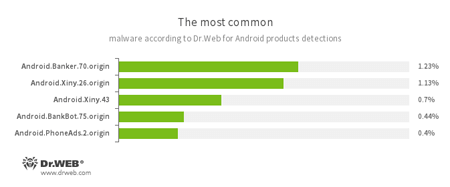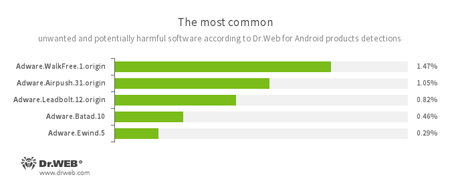Doctor Web’s overview of malware detected on mobile devices in September 2016
September 30, 2016
The first autumn month appeared to be a quiet month in terms of information security. September was marked by the discovery of Android Trojans capable of performing injections into processes of system applications and launch malicious software.
PRINCIPAL TRENDS IN SEPTEMBER
- The emergence of Android Trojans capable of performing injections into processes of system applications
Mobile threat of the month
In September, Doctor Web’s specialists detected modified Trojans belonging to the Android.Xiny family. They are able to covertly download and install malicious and unwanted applications on Android devices. New versions can now inject themselves into processes of system applications and launch malicious plugins. For more information about these Trojans, refer to the news article.
According to statistics collected by Dr.Web for Android
- Android.Banker.70.origin
- Android.BankBot.75.origin
Trojans designed to steal login credentials in order to access online banking applications. It also steals money from the bank accounts of Android device owners. - Android.Xiny.26.origin
- Android.Xiny.43
Trojans that get root privileges, copy themselves into the system directory, and then download various applications without the user’s knowledge. The can also display annoying advertisements. - Android.PhoneAds.2.origin
A Trojan that delivers annoying advertisements.
- Adware.WalkFree.1.origin
- Adware.Airpush.31.origin
- Adware.Leadbolt.12.origin
- Adware. Batad.10
- Adware.Ewind.5
An unwanted program module that is incorporated into Android applications and is responsible for displaying annoying ads on mobile devices.
As before, attackers are engaged in ongoing efforts to compromise mobile devices by creating new malicious and fraudulent applications. Dr.Web for Android products can securely protect Android devices from malicious and unwanted software.

